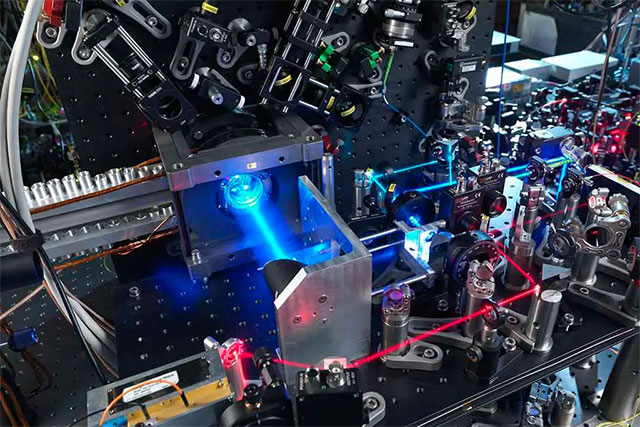Science is about to 'redefine the concept of a second' thanks to this new research
In an effort to measure time even more precisely, researchers from six European countries joined forces to compare ten ultra-precise optical clocks at once — something that has never been done on such a large scale before. These clocks, which use lasers to measure how atoms jump between energy levels, are far more accurate than traditional cesium atomic clocks. In fact, optical clocks can lose less than a second over billions of years.
To test how well the clocks were in sync, the team made 38 measurements called frequency ratios . Four of these had never been measured directly before, and many were of unprecedented precision. The experiment brings us a step closer to updating how the world defines a second, perhaps moving from caesium clocks to optical clocks.

' The precise time and frequency signals provided by atomic clocks are essential for many everyday technologies such as GPS, managing power grids and keeping financial transactions in sync ,' said Dr Helen Margolis from the UK's National Physical Laboratory (NPL).
Connecting these clocks over long distances is complicated. Scientists have used two methods of connection: GPS signals from satellites and homemade fiber optic cables. GPS can reach all the clocks, but it is not the most accurate due to noise and signal problems. Fiber optic cables used in France, Germany and Italy are 100 times more accurate, but only cover short distances. For clocks in the same laboratory, such as in Germany and the UK, short fiber optic cables reduce errors even more.
The findings were published in the journal Optica, a specialist in optical science. The team also looked at how different frequency ratios compared between the systems to spot any mismatches or patterns.
' These measurements provide important information about the work required for an optical clock to achieve the precision and reliability required for international timekeeping ,' said Dr Marco Pizzocaro from the Italian National Institute of Metrology (INRiM). He added that the system acts as a distributed laboratory, which could be used for further physics research such as searching for dark matter or testing the foundations of physics.
Coordinating all ten clocks and keeping them running in sync across six countries required extensive planning. Some results were not as expected, but having multiple clocks running at the same time helped pinpoint where problems were occurring.
'Not all results matched expectations, and we noted some inconsistencies in the measurements. However, comparing multiple clocks at once and using more than one coupling technique made it easier to identify the source of the problem.'
The researchers say more work is needed to reduce measurement errors and ensure that optical clocks remain reliable over time. If successful, these clocks could soon become the global standard for timekeeping.
You should read it
- How to display seconds on Windows system clock
- Configuration to play Atomic Heart on PC
- How to show the clock on the Taskbar in Windows 10
- If the atomic bomb exploded in the ground, what horrible thing would happen?
- 7 Ways to Fix the Wrong Time on Your Computer Clock
- 12 best free clock widgets for Android
 Microsoft: Windows 11 24H2 is the 'most reliable' version of Windows ever
Microsoft: Windows 11 24H2 is the 'most reliable' version of Windows ever Apple launches AppleCare One: integrated warranty package for multiple devices
Apple launches AppleCare One: integrated warranty package for multiple devices iOS 27 brings a host of features for Apple's first foldable iPhone
iOS 27 brings a host of features for Apple's first foldable iPhone Launch of the world's first hybrid chip that combines electronics, photonics and quantum technology
Launch of the world's first hybrid chip that combines electronics, photonics and quantum technology All about Windows 10 end of support
All about Windows 10 end of support Google Assistant is disappearing from your smartwatch
Google Assistant is disappearing from your smartwatch